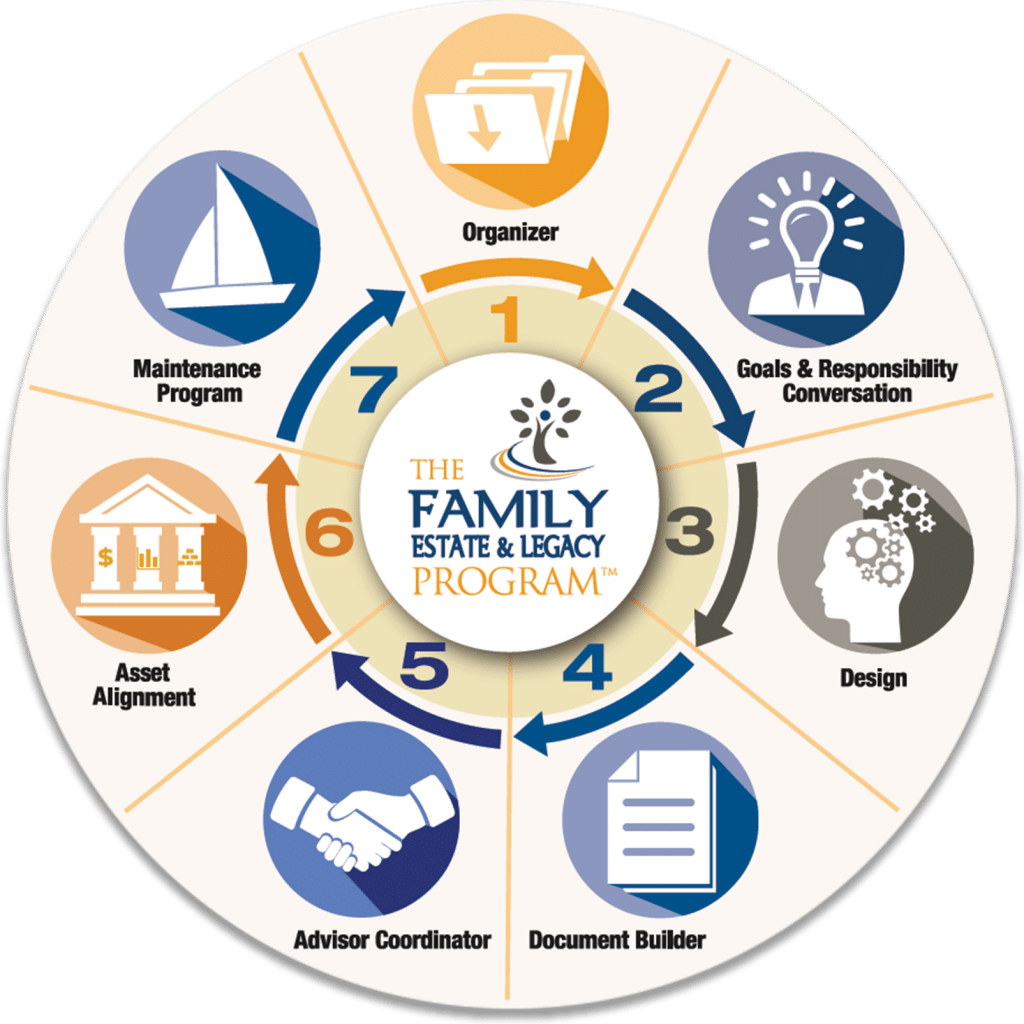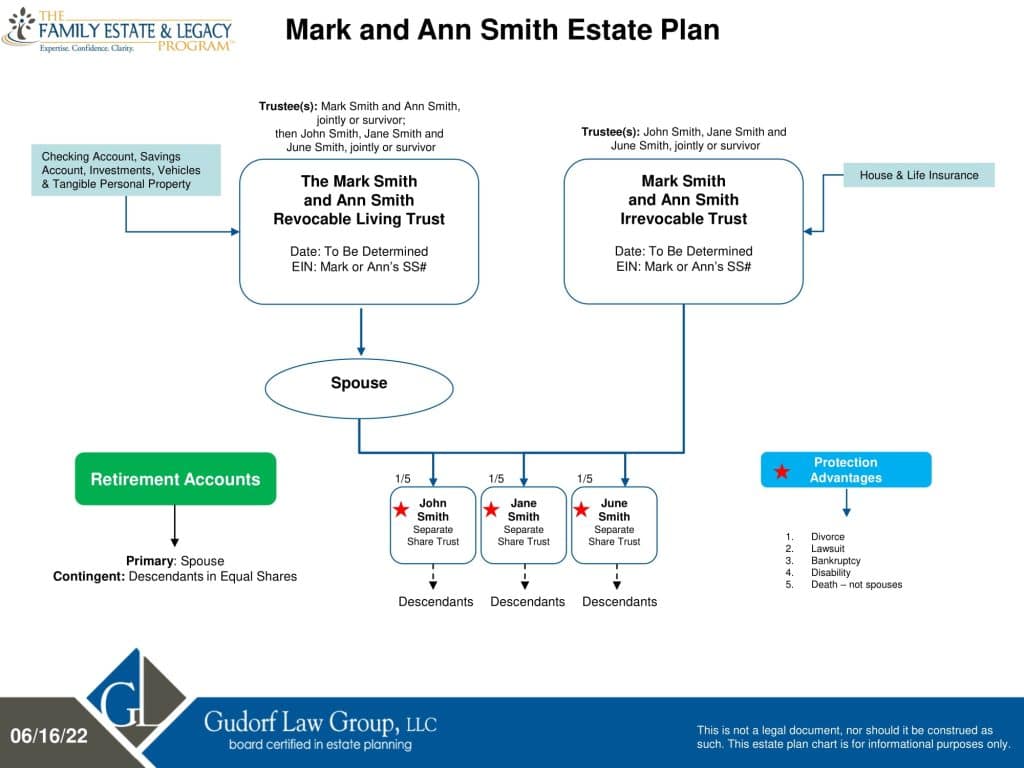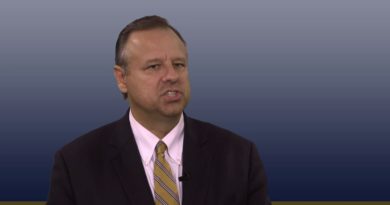Estate Planning Process at Gudorf Law Group
If you’re reading this, you probably already know that you need an estate plan, or need to update the one that you have. But you might not be sure where to start, or what the process involves. If so, you’re not alone: a recent study found that only about 33% of Americans have an estate plan. Some people put off making an estate plan because their lives are busy, and the need for a plan seems remote. Another common reason for delaying is a lack of familiarity with the process, and a perception that it’s too complicated.
At Gudorf Law Group, we understand how busy life can be, and how daunting it can be to put another thing on your to-do list. We have also seen firsthand the problems that occur when someone without a plan becomes disabled or dies. We are committed to protecting Ohioans and their families by making the estate planning process as simple and foolproof as possible. Done right, estate planning shouldn’t be a source of stress, but should create peace of mind.
Walk with us through our carefully-designed estate planning process, using the example of a fictional family that might be very much like yours.
Meet the Smiths
Our example family is the Smiths:
- Mark, age 62, project manager for an auto supplier
- Ann, age 58, hospital social worker
- John, son, age 32, married with one child
- Jane, daughter, age 29, engaged
- June, daughter, age 25, single
Both Mark and Ann are employed with excellent benefits, including retirement plans to which they have been dutifully contributing. Aside from the mortgage on their home and a payment on one of the family’s two vehicles, the family has little debt. Fortunately, all of the family members are in good health. However, after the recent unexpected death of a neighbor, Mark and Ann decided it was probably time to update their estate plan.
They have wills made years ago when their children were young, but their needs have changed. They have accumulated some wealth, and don’t want to risk losing it to the nursing home should one or both of them need long-term care. Mark’s dad suffered from Alzheimer’s, and they worry about who would manage their needs if one or both of them became incapacitated. They want to leave assets to their children, but also want to make sure those assets are managed responsibly and stay in the family.
Family Estate and Legacy Program
Ann’s coworker Lee recently updated his estate plan, and mentions to Ann that he and his wife Chris used Gudorf Law Group’s Family Estate & Legacy Program to create their new plan. Like Ann and Mark, Lee and Chris have adult children who are just starting to get married and have kids of their own. Lee and Chris know that as they age and their family grows, their estate planning, tax, and financial needs are likely to evolve. They liked the idea of being connected with a team that would help them keep their plans updated as their needs change. Ann listens with interest as Lee describes the process he and Chris went through to develop their plan.
Getting Started: Online Estate Planning Workshop
Mark and Ann are interested in the idea of developing an ongoing relationship with an experienced estate planning team, but they aren’t ready to commit to working with a specific attorney just yet. They decide to gather more information in a low-risk, low-effort way: by attending the online Estate Planning Workshop.
The webinar presents “Estate Planning 101” and allows Mark and Ann to learn more about estate planning, ask questions via chat, and download free educational materials. At the conclusion of the webinar, Mark and Ann feel ready to take the next step in updating their estate plan. They still have questions about the best way to protect their assets and their children, so they schedule a Goals & Responsibility conversation with one of Gudorf Law Group’s experienced estate planning attorneys.
Goals & Responsibility Conversation
Prior to the Goals & Responsibility conversation, Gudorf Law Group provided Mark and Ann with a Client Organizer to complete. Filling out the organizer allowed Mark and Ann to create a comprehensive picture of their assets and financial situation, and consolidated the information the attorney needed to ask them the right questions in the initial meeting. Of course, this sensitive information was kept confidential.
In the Goals & Responsibility conversation, Mark and Ann had an hour to sit down and discuss their particular needs and values with an attorney. Among the issues that emerged were their fears about becoming incapacitated. Although Mark and Ann have simple wills, they do not have any documents allowing someone to make medical or financial decisions on their behalf if they should become incapacitated. They were shocked to learn that at their age, it’s more than twice as likely that they will become disabled than die. In fact, at no age during their working lives are they more likely to die than become disabled.
With vivid memories of Mark’s father’s years in a nursing home, Mark and Ann are also acutely aware of how quickly the cost of long-term care could devastate their savings. They want their assets to go to their kids, not the nursing home. That said, they worry about what could happen if one of their kids gets divorced. Could their child’s ex-spouse take part of their inheritance in a divorce?
At the conclusion of the Goals & Responsibility conversation, it’s clear that Mark and Ann’s priorities are planning for the possibility of their own incapacity; protecting their assets from the nursing home; preserving their kids’ inheritance from divorce and creditors; and avoiding the need for probate.
Based on their goals, the attorney quotes Mark and Ann a flat fee for their estate planning. The fee seems reasonable to them, and they are glad that they can call Gudorf Law with questions as needed without worrying how much they will be billed for it. They decide to work with the firm to create their estate plan.
The Design Process
The next step of the estate planning process sees Mark and Ann meeting again with their attorney, this time to design an estate plan to achieve their goals. Based on the discussion at the Goals & Responsibility meeting, the attorney recommends that they create a joint revocable living trust, which will allow them to use and enjoy the trust assets while they are alive and healthy. Should they become incapacitated, the successor trustee they have chosen can seamlessly step in to manage the assets. The attorney also recommends that Mark and Ann create an irrevocable trust designed to protect assets from the nursing home and their children’s creditors (including divorcing spouses).
Upon Mark and Ann’s deaths, the revocable trust becomes irrevocable. The successor trustee named in the trust document will take over management . The attorney also recommends a pour-over will for both Mark and Ann to name a guardian for their minor children and “pour” any assets that are not in their trust into the trust at the time of their death. To complete their estate plan, the attorney recommends durable financial powers of attorney and advance healthcare directives. These documents will allow a person of their choosing to make decisions for Mark and Ann if they can no longer make them for themselves.
Delivery of Documents
After the design meeting, the attorney builds customized documents based on the specifications Mark and Ann gave. The attorney creates flowcharts and summaries that are easy to read and interpret so that Mark and Ann will be able to understand what each document does and how it works.
At this point in the process, it’s common to have lots of questions, so Mark and Ann have a third meeting with their attorney: the delivery meeting. Gudorf Law builds in plenty of time for Mark and Ann to get the answers they need to feel comfortable signing their trust, will, powers of attorney, and other documents. The attorney reviews Mark and Ann’s documents with them in depth, section by section, before they execute them. Afterward, they are given their “red books”—their trust binders that they can take home to consult as needed.
At Gudorf Law, we understand that it is important for our clients’ other financial advisors and professionals to be on the same page with their estate planning attorney. Mark and Ann wanted their financial advisor conferenced into the appointment at which we delivered their estate planning documents. We were happy to do so, and Mark and Ann felt more comfortable knowing that their trusted advisors were in agreement about their plan.
Asset Alignment
Perhaps most important to our clients’ peace of mind is knowing that while they are deeply involved in the estate planning process, they are never alone in it. We are just an email or a phone call away at every step of the process, and afterwards as well.
At some law firms, delivery of the estate planning documents is the end of the process. Unfortunately, what often happens is this: the clients take their estate plan home, relieved at having “completed” it, and put it in a desk drawer. When the client dies some time later, a family member pulls the trust from the drawer…and realizes it’s completely useless, because the client didn’t understand how to fund the trust.
Even the best designed trust will be ineffective if it does not contain assets. But the process of funding a trust, also called “asset alignment,” can be confusing. At Gudorf Law, we don’t believe in getting our clients all the way down the field, then leaving them short of the goal line. Experience has taught us that most clients are intimidated by the process of funding their trusts, so they either put off doing it (sometimes with disastrous results), or fund their trusts incorrectly or incompletely.
It turned out that Mark and Ann weren’t sure to start when it came to funding their trust. They were relieved to know that their estate planning package included a two-hour interactive funding workshop in which the Gudorf Law team guides them through the funding process. They also receive a detailed workbook to help them understand the exact steps they need to take to fund their trust with various types of assets. If the workshop doesn’t answer all their questions, Mark and Ann know that they can call Gudorf Law Group for additional guidance without incurring extra legal fees.
The process described above, from the Goals & Responsibility conversation through the asset alignment workshop, are all part of Gudorf Law Group’s Family Estate & Legacy Program. Every family is different, and every estate plan needs to be different, too. But we have found that it is helpful and confidence-building for our clients to have a predictable process. The Family Estate & Legacy Program allows us to help our clients efficiently create an estate plan that is designed just for them, and lets them know what to expect.
Perhaps most important to our clients’ peace of mind is knowing that while they are deeply involved in the estate planning process, they are never alone in it. We are just an email or a phone call away at every step of the process, and afterwards as well.
Maintenance and Beyond: The Legacy Club
We may say that Mark and Ann’s estate plan is “completed,” and it is, in the sense that the documents are properly drafted and signed, and the trust is funded. But in another sense, estate planning is never really finished, because life is always changing. And as life changes, Mark and Ann’s plan may need to change, too.
Their kids will reach adulthood, and may marry and have children of their own. They may acquire new assets, and get rid of old ones. In addition to the changes in their own lives, it’s virtually certain that there will be changes to the legal, tax, and financial world that could affect their estate plan.
It’s been said that change is the only constant, and at Gudorf Law Group, we want to help our clients respond to change. The last phase of our Family Estate & Legacy Program is the maintenance phase. This phase is a complimentary one-year membership in our Legacy Club program, which helps ensure that our clients’ estate plan will work as intended when it’s needed.
With membership in the Legacy Club, Mark and Ann receive continuity of service. Within six months after the delivery of their estate planning documents, we will sit down with them, their successor trustee, and anyone else who needs to understand their plan, making sure everyone knows their roles and responsibilities, and answering any questions they may have. We find that this meeting is especially helpful for trustees, who feel more comfortable reaching out to us for guidance when needed, because they have already met us.
In addition to this meeting, The Legacy Club gives Mark and Ann access to ongoing counseling regarding their plan, as well as a host of other benefits, including 24/7 access to their estate planning documents through ShareFile and our client appreciation events. These events are important to us at Gudorf Law Group. The relationship between our estate planning attorneys and clients is personal as well as professional; events like our annual Oktoberfest are a way to strengthen those connections and make estate planning an even more positive experience.
If you would like to learn more about Gudorf Law Group’s estate planning services, Family Estate & Legacy Program, and Legacy Club, we invite you to contact us to schedule a consultation.








